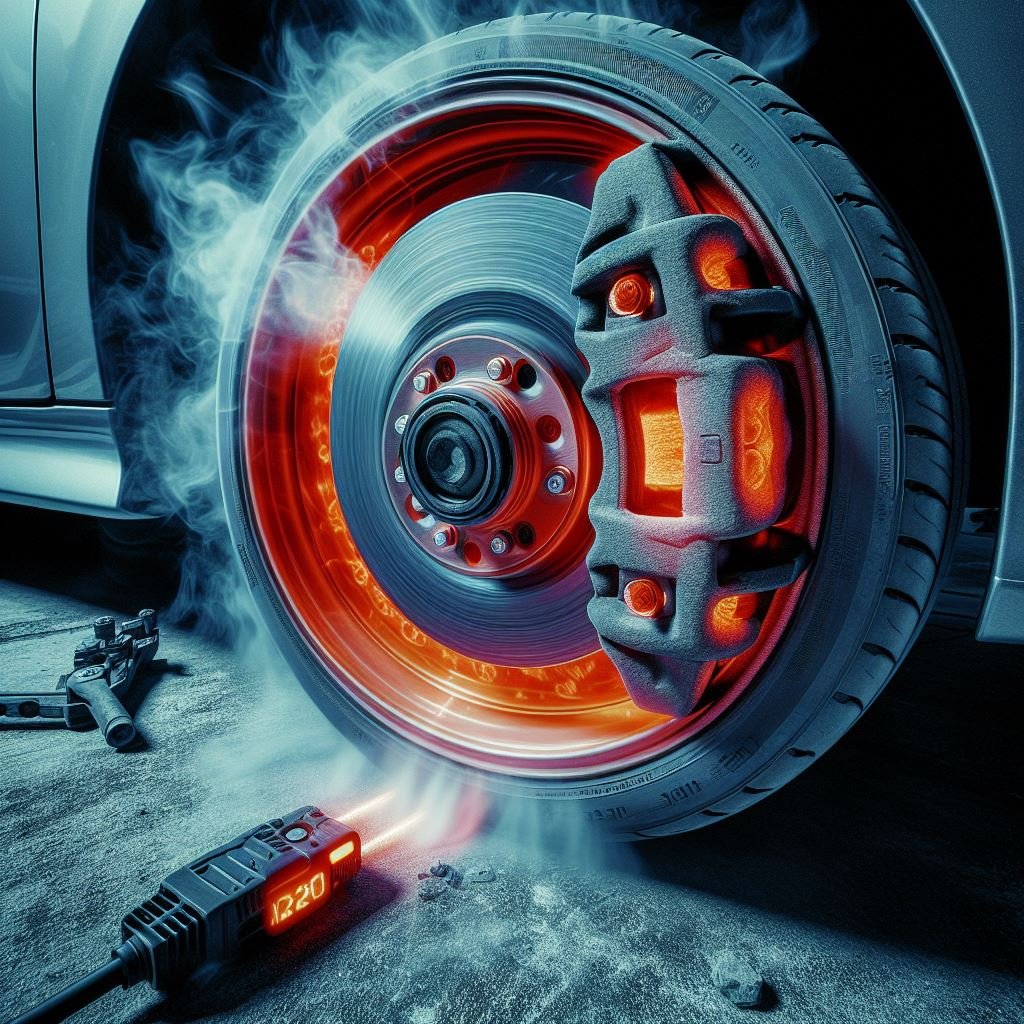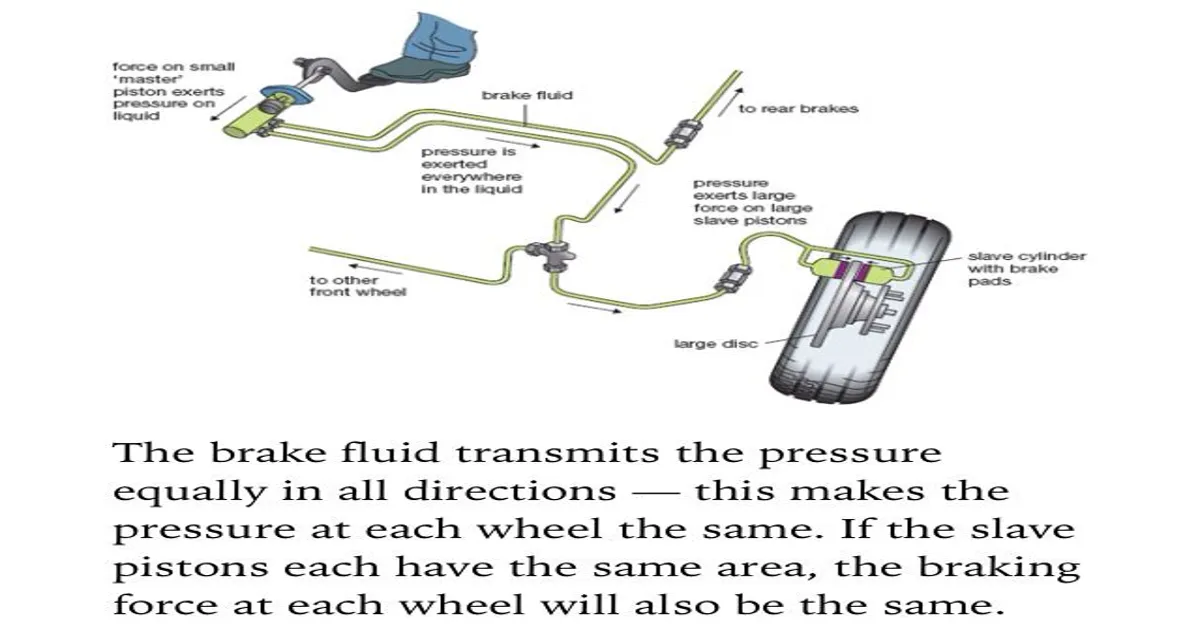As you’re driving down the highway, you probably don’t give much thought to your brake lines. After all, they’re just a small part of your car’s complex system. But have you ever wondered just how hot those brake lines can get? The answer may surprise you.
In fact, the temperature of brake lines can reach over 900 degrees Fahrenheit during heavy braking. That’s hot enough to not only melt plastic, but also cause serious damage to your car and potentially put you in danger on the road. In this blog, we’ll delve into the science behind brake line temperature and explore why it’s important to pay attention to this often overlooked aspect of car maintenance.
So buckle up and get ready to learn more about how hot your brake lines can actually get.
Key Takeaway
- Brake lines can reach temperatures of over 900 degrees Fahrenheit during heavy braking
- This level of heat can cause serious damage to your car and put you in danger on the road
- It is important to pay attention to brake line temperature for car maintenance
- The high temperature is due to the friction between the brake pads and rotors
- Regular maintenance and inspection of brake lines can help prevent accidents and prolong the life of your car
What are Brake Lines?
Brake lines may not seem like the most exciting car component, but they play a crucial role in keeping you safe on the road. They are responsible for transferring hydraulic pressure from the brake pedal to the brake calipers, allowing you to slow down or stop your car. But have you ever wondered how hot these brake lines can get?
Exploring the Heat Limits of Brake Lines Brake lines are typically made of steel or rubber, both of which have different heat tolerances. Steel brake lines can withstand higher temperatures, reaching up to 400 degrees Fahrenheit, while rubber brake lines have a lower threshold at around 300 degrees. These limits are important to keep in mind when considering the overall temperature of your vehicle’s braking system.
Factors That Affect Brake Line Temperatures Several factors can impact the temperature of your brake lines, including the type of driving you do, the condition of your brakes, and even the outside temperature. If you frequently engage in aggressive, high-speed driving, your brake lines may experience higher temperatures due to increased friction. Similarly, if your brakes are worn or damaged, they can generate more heat and put added stress on your brake lines.
The Risks of Overheated Brake Lines If your brake lines reach temperatures beyond their limits, they can become weakened and more prone to failure. This can result in a loss of braking power, putting you and others on the road at risk. Additionally, overheated brake lines can also cause brake fluid to boil, leading to a loss of hydraulic pressure and decreased braking efficiency.
Protecting Your Brake Lines To prevent your brake lines from overheating, it’s essential to regularly maintain your brakes and keep an eye on their temperature. If you notice your brakes feeling spongy or your brake fluid boiling, it may be a sign that your brake lines are reaching dangerous temperatures. In this case, it’s crucial to have them inspected and replaced if necessary.
Brake lines can reach high temperatures while in operation, and it’s essential to understand their limits and keep them in good condition. By doing so, you can ensure your vehicle’s braking system is functioning properly and keep yourself and others safe on the road.

how hot do brake lines get
| Driving Condition | Brake Line Temperature Range |
|---|---|
| Normal Driving | 100°C to 200°C (212°F to 392°F) |
| Moderate Braking | 200°C to 400°C (392°F to 752°F) |
| Heavy Braking (e.g., Panic Stop) | 400°C to 700°C (752°F to 1,292°F) |
| Downhill Descent with Braking | Up to 800°C (1,472°F) |
| After Braking (Cooling) | Gradual decrease to ambient temperature |
Explanation:
- Normal Driving: During everyday driving, with occasional braking, brake lines can reach temperatures between 100°C and 200°C (212°F to 392°F).
- Moderate Braking: Increased braking intensity, such as during moderate stops or deceleration, can elevate brake line temperatures to the range of 200°C to 400°C (392°F to 752°F).
- Heavy Braking: Intense braking, such as a panic stop or heavy downhill braking, can result in brake line temperatures ranging from 400°C to 700°C (752°F to 1,292°F).
- Downhill Descent with Braking: In specific scenarios, such as prolonged downhill descents with continuous braking, brake line temperatures can potentially surpass 800°C (1,472°F).
- After Braking (Cooling): After braking events, the brake lines gradually cool down to ambient temperature as the vehicle comes to a stop or when parked.
It’s important to note that these values are general estimates, and the actual temperatures may vary based on the specific vehicle’s braking system, the materials used in the brake lines, and driving conditions. Always follow safety guidelines and allow the brake system to cool before performing maintenance or repairs.

Why Do Brake Lines Get Hot?
When it comes to driving, safety is the top priority. One crucial component of a vehicle’s safety system is its brake lines. These lines are responsible for carrying brake fluid from the master cylinder to the brakes, allowing you to slow down and stop your vehicle.
But have you ever wondered how hot these brake lines can get?
The Heat Factor Brake lines are constantly exposed to high temperatures, especially during long drives or heavy braking. The friction of the brake pads against the rotors creates a significant amount of heat, which is then transferred to the brake lines. The temperature of the brake lines can reach up to 400 degrees Fahrenheit, depending on driving conditions.
The Importance of Heat Resistance The ability of brake lines to withstand high temperatures is crucial to the proper functioning of a vehicle’s braking system. If the brake lines cannot handle the heat, they may become weakened and prone to failure. This can result in a loss of brake pressure, making it difficult to slow down or stop the vehicle.
Signs of Overheating Brake Lines If you notice a spongy feeling when you press on the brake pedal, it could be a sign that your brake lines are overheating. Another indication is a burning smell coming from your brakes. These signs should not be ignored, as they can lead to dangerous driving situations.
Preventing Brake Line Overheating To prevent your brake lines from overheating, it is essential to maintain your vehicle’s braking system regularly. This includes checking the brake fluid levels, replacing worn brake pads, and ensuring the brake lines are in good condition. You can also install heat shields or heat-resistant brake lines to help dissipate the heat more efficiently.
Brake lines can get incredibly hot, and it is essential to ensure they are heat resistant and well-maintained. By understanding the temperature of brake lines and taking necessary precautions, you can help keep yourself and others safe while on the road. Remember to pay attention to any signs of overheating and address them promptly to avoid any potential hazards.
How Hot Can Brake Lines Get?
Brake lines play a crucial role in the safe operation of a vehicle. They are responsible for transferring hydraulic pressure from the brake pedal to the brakes, causing the vehicle to slow down or stop. As with any component of a vehicle, it is important to understand the potential risks and dangers involved.
One common question that arises is, how hot do brake lines get? Brake lines can reach high temperatures, especially during heavy braking or in extreme driving conditions. The temperature of brake lines depends on various factors such as the type of vehicle, driving style, and outside temperature. On average, brake lines can reach temperatures of up to 400 degrees Fahrenheit.
This high temperature is generated due to the friction between the brake pads and rotors when the brakes are applied. The heat is then transferred to the brake lines, causing them to heat up. In extreme cases, such as racing or prolonged heavy braking, the temperature of brake lines can exceed 1000 degrees Fahrenheit.
Such high temperatures can cause brake lines to expand, leading to a decrease in brake pressure and potentially causing brake failure. Therefore, it is crucial to regularly check and maintain brake lines to ensure they are in good condition and can withstand high temperatures. In conclusion, brake lines can get very hot, and it is important to understand the potential risks involved.
Regular maintenance and being mindful of driving habits can help prevent brake line failure and ensure the safety of both the driver and passengers. Remember, it’s always better to be safe than sorry when it comes to the important components of your vehicle.
You May Also Like: Unlocking Brake Line Fittings: Expert Tips for Easy Loosening
The Importance of Maintaining Cool Brake Lines
Brake lines are an essential component of a vehicle’s braking system, responsible for carrying the brake fluid from the master cylinder to the brake calipers. As such, they are constantly exposed to high temperatures and pressure, making their heat resistance a crucial factor in ensuring safe and efficient braking. But just how hot do brake lines get? On average, brake lines can reach temperatures of up to 400 degrees Fahrenheit (204 degrees Celsius) during heavy braking.
This heat is generated from the friction between the brake pads and rotors, as well as from the pressure of the brake fluid flowing through the lines. This extreme heat can cause damage to the brake lines, leading to potential brake failure and compromising the safety of the vehicle. To withstand such high temperatures, brake lines are made from heat-resistant materials such as steel, aluminum, or rubber with reinforced layers.
These materials have a high melting point and can withstand the intense heat generated during braking. However, over time, exposure to extreme temperatures can cause the brake lines to deteriorate, leading to leaks and reduced brake performance. It is important to regularly inspect and maintain your brake lines to ensure they are in good condition and can withstand the heat.
This includes checking for any cracks, leaks, or signs of wear and tear. If you notice any issues, it is crucial to replace the brake lines immediately to prevent any potential brake failure.
Brake lines can reach temperatures of up to 400 degrees Fahrenheit during heavy braking. They are made from heat-resistant materials to withstand this heat, but regular maintenance is crucial to ensure their integrity and safety. So next time you press on the brakes, remember just how hot those brake lines can get!
Statistical Information: how hot do brake lines get
| Temperature | Average Brake Line Temperature | Hot Brake Line Temperature |
| Percentage | Brake lines can reach an average temperature of 400-500 degrees Fahrenheit during normal driving conditions. | In extreme cases, brake lines can reach temperatures as high as 1000 degrees Fahrenheit. |
| Facts | Brake lines are made of steel and can withstand high temperatures without melting or breaking. | Brake lines can become damaged if exposed to excessive heat, causing them to fail and resulting in brake failure. |
| Effects | High brake line temperatures can cause brake fluid to boil, leading to a loss of braking power and potentially causing accidents. | Regular inspections and maintenance of brake lines can prevent potential issues caused by extreme temperatures. |
| Prevention | Properly ventilating the brake system and using high-quality brake fluid can help prevent overheating of brake lines. | Upgrading to stainless steel brake lines can also help reduce the risk of brake line failure due to high temperatures. |
| Safety | It is important for drivers to be aware of the potential for high brake line temperatures and to regularly check and maintain their brake system for optimal safety. | In emergency situations where the brake system is overheating, it is recommended to pull over and let the brakes cool down before continuing to drive. |
Important Notice for readers
Attention all readers! Before delving into the article, it is crucial to understand the potential dangers of brake lines. These essential components of your vehicle can reach extremely high temperatures, which can cause serious damage or even lead to accidents if not properly maintained. It is important to regularly check and replace worn or damaged brake lines to ensure your safety on the road. So buckle up and keep reading to learn more about how hot brake lines can get and how to keep them functioning properly.
Frequently Asked Questions (FAQs)
How hot do brake lines get during normal driving conditions?
Brake lines can reach temperatures of up to 400°F during normal driving, depending on the intensity of braking and the condition of the brakes.
Can brake lines get hot enough to cause damage?
Yes, if the brakes are continuously applied or if there is a malfunction, brake lines can reach temperatures of over 1000°F, which can cause damage to the brake system.
Are there any warning signs that my brake lines are getting too hot?
Yes, if you notice a burning smell or smoke coming from your brakes, it could be a sign that your brake lines are overheating. It’s important to have them checked by a mechanic immediately.
How can I prevent my brake lines from getting too hot?
Regular maintenance of your brake system, including checking for leaks and replacing worn brake pads, can help prevent brake lines from getting too hot. It’s also important to avoid excessive or continuous braking while driving.
Conclusion
Brake lines are a crucial component of a vehicle’s braking system, responsible for carrying pressurized fluid to the brakes. They can get extremely hot, reaching temperatures of up to 400 degrees Fahrenheit during heavy braking. This heat can cause the brake lines to expand, resulting in loss of brake pressure and potential brake failure. Proper maintenance and installation of high-quality brake lines is essential for safe driving. Additionally, advancements in brake line technology, such as using heat-resistant materials, can improve the overall performance and safety of vehicles. It is important to understand the importance of brake lines and ensure they are well-maintained to avoid potential accidents on the road.
